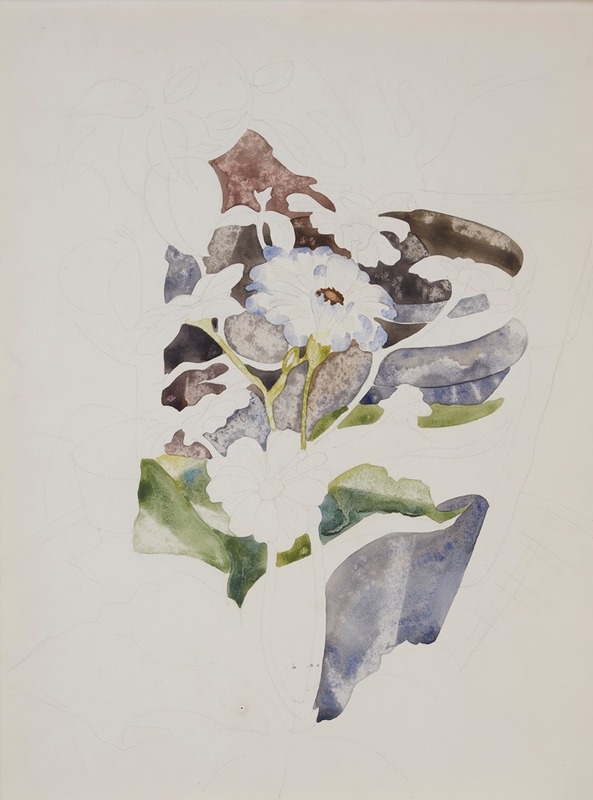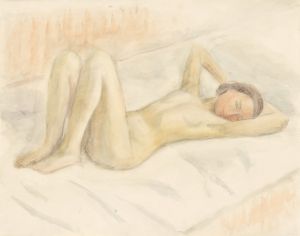
Zinnias
A hand-painted replica of Charles Demuth’s masterpiece Zinnias, meticulously crafted by professional artists to capture the true essence of the original. Each piece is created with museum-quality canvas and rare mineral pigments, carefully painted by experienced artists with delicate brushstrokes and rich, layered colors to perfectly recreate the texture of the original artwork. Unlike machine-printed reproductions, this hand-painted version brings the painting to life, infused with the artist’s emotions and skill in every stroke. Whether for personal collection or home decoration, it instantly elevates the artistic atmosphere of any space.
Charles Demuth was an American artist known for his contributions to the Precisionist movement, a style that emerged in the early 20th century characterized by its focus on industrial and architectural subjects, as well as its clean lines and geometric forms. While Demuth is perhaps best known for his work "I Saw the Figure 5 in Gold," he also created a number of still life paintings, including "Zinnias."
"Zinnias" is one of Demuth's still life paintings, showcasing his ability to blend elements of realism with modernist abstraction. The painting features a bouquet of zinnias, a type of flower known for its bright colors and varied forms. Demuth's depiction of the flowers is both detailed and stylized, capturing the vibrant hues and intricate shapes of the petals while also simplifying and abstracting their forms in a way that aligns with the Precisionist aesthetic.
In "Zinnias," Demuth employs a careful balance of color and composition. The flowers are arranged in a way that draws the viewer's eye across the canvas, with each bloom rendered in a palette that highlights its natural beauty. The background of the painting is typically subdued, allowing the zinnias to stand out as the focal point of the work. This approach is consistent with Demuth's broader artistic practice, which often involved isolating and emphasizing specific elements within a composition.
Demuth's still life paintings, including "Zinnias," reflect his interest in exploring the intersection of nature and modernity. While Precisionism is often associated with urban and industrial subjects, Demuth's choice to focus on flowers demonstrates the versatility of the movement and its potential to encompass a wide range of themes. By applying the principles of Precisionism to a still life subject, Demuth was able to create a work that is both visually striking and conceptually rich.
The painting "Zinnias" is also indicative of Demuth's broader artistic influences. He was deeply inspired by European modernists, particularly the Cubists, whose emphasis on geometric forms and fragmented perspectives can be seen in his work. At the same time, Demuth maintained a strong connection to American art traditions, drawing on the legacy of still life painting while infusing it with a modern sensibility.
Throughout his career, Demuth's work was characterized by its meticulous attention to detail and its innovative use of form and color. "Zinnias" exemplifies these qualities, showcasing his ability to transform a simple subject into a complex and engaging composition. The painting stands as a testament to Demuth's skill as an artist and his contribution to the development of modern American art.
Today, Charles Demuth's paintings, including "Zinnias," are held in various public and private collections, where they continue to be studied and appreciated for their unique blend of realism and abstraction. His work remains an important part of the American art historical canon, offering insight into the evolution of modernist aesthetics and the diverse influences that shaped his artistic vision.


















